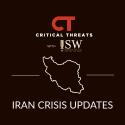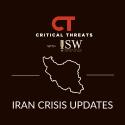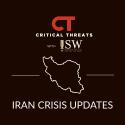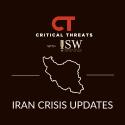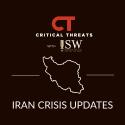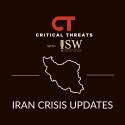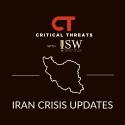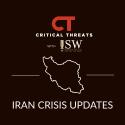Iran Crisis Update, October 28
Oct 28, 2022 - ISW Press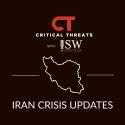
Iranian security personnel fired live ammunition and tear gas at anti-regime demonstrators in Zahedan, Sistan Baluchistan Province on October 28 as protesters commemorated the regime’s brutal crackdown there four weeks earlier. Iranian security forces may have deployed snipers to help violently suppress dissent. Iranian social media users reported that security forces killed at least two protesters-- possibly including a 12-year-old boy--although the true figure is likely higher. Cybersecurity watchdog NetBlocks confirmed severe internet disruptions in Zahedan on October 28. Protests likely commenced during Friday prayer sermons at the Makki Grand Mosque in Zahedan, where hundreds of worshippers gathered to commemorate the regime’s violent September 30 crackdown on anti-regime demonstrations. Some worshippers carried signs with slogans unique to the Mahsa Amini protest wave, including ”woman, life, freedom.” Online footage shows significant crowds participating in anti-regime protests throughout the city later that day. Anti-regime demonstrations in Zahedan may become increasingly common on Fridays as residents seek to commemorate protesters killed by regime security personnel.


